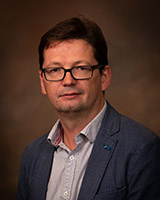
Dmitry Bedrov
Department Chair and ProfessorOffice: CME 207
Phone: 801-585-3949
Email: d.bedrov@utah.edu
Research Interest
My research interest lies in the area of multiscale modeling of soft-condensed matter systems that exhibit complex, multiscale structure often arising from molecular and super-molecular self-assembly.
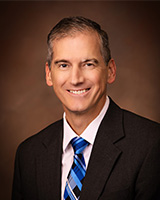
Michael Free
Associate Department Chair and ProfessorOffice: WBB 405
Phone: 801-585-9798
Email: michael.free@utah.edu
Research Interests
My research interests include hydrometallurgy, electrometallurgy, corrosion, and materials synthesis. I have worked on a variety of research projects involving metals extraction, separation, recovery, and refining as well as corrosion, materials synthesis, and additive manufacturing. The hydrometallurgy and electrometallurgy research projects have focused on copper, gold, titanium, rare earth elements, and critical metals. The corrosion investigations have involved steel, aluminum, and additively manufactured alloys.
Google Scholar
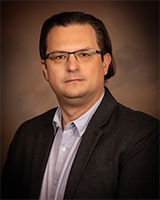
Zlatan Aksamija
Associate ProfessorOffice: CME 210
Phone: 801-581-7994
Email: zlatan.aksamija@utah.edu
Research Interest
My research is in electronic materials, low-dimensional, heterostructures, and nanostructured semiconductors. The main focus of my work is on heat dissipation in nanoelectronics, nanoscale heat transport, and the coupling between electronic and thermal transport in electronic materials. These properties are especially important in two-dimensional materials such as graphene or molybdenum disulfide, where van der Waals stacking of heterogenous layers enables new properties but leads to poor interface conductance. I am also interested in the reverse problem of thermoelectric energy conversion for applications in scavenging waste heat. There, I study thermoelectric conversion in organic materials, which offer environmentally-friendly synthesis but their amorphous structure inhibits electronic transport. Using first-principles computational tools, my group sheds light on the mapping between atomic and mesoscale structure and electro-thermal transport.
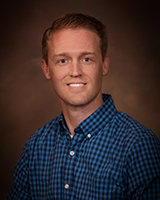
Research Interest
My research is on polymer materials and their interfaces with biological systems. Our projects range from sustainable polymer materials that become nutrients for microorganisms to biomedical materials that interact with biomarkers, biological signals, hormones, and single cells. In addition, we work on the physics of glide performance in skiing and snowboarding, where we characterize the snow interface on the temperature-dependent properties of polymers and waxes.

Darryl Butt
Professor, Graduate School DeanOffice: FASB 205
Phone: 801-581-8767
Email: darryl.butt@utah.edu
Research Interest
Dean Butt provides leadership to the Graduate School in strategic planning, administration and promoting excellence in graduate research and educational experiences.

Research Interests
Physical Metallurgy and Mechanical Behavior of Materials. Research focus on fatigue and fracture mechanics, materials processing, Li-ion battery material science, modeling of diffusion phenomena, first principles methods and computational alloy design. Also performs failure analysis investigations to determine the root cause of failures in materials and structures.

Suhas Eswarappa Prameela
Assistant ProfessorOffice: WBB 416
Phone:801-581-6305
Email: suhas.prameela@utah.edu
Research Interests
design and development of advanced structural materials using high-throughput experiments, novel thermo-mechanical processing techniques and advanced manufacturing techniques to create resilient materials for aero/space, energy, and defense sectors. Please check out the group website for more information.
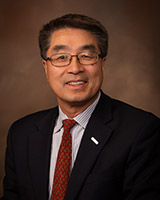
Research Interests
Research interests cut across physical metallurgy, powder metallurgy, and extractive metallurgy. Research focuses on developing metals production and manufacturing processes to achieve exceptional properties, sustainability, and cost effectiveness. One major research area involves primary Ti metal production, Ti powder production, Ti sintering, Ti additive manufacturing, and the relationship between Ti alloy microstructure and mechanical properties. Another new major research thrust is using advanced powder metallurgy processes for the production of clean steel and products with no or low GHG emissions and reduced energy intensity. Prof. Fang’s interest also covers a range of additive manufacturing processes. The Center for Additive Manufacturing within the Powder Metallurgy Laboratory is equipped with an LPBF machine, a direct energy deposition (DED) machine, a metals binder jetting printer, and a lithograph-based metals manufacturing process. Professor Fang is also a globally recognized expert in cemented tungsten carbide, tungsten, and other refractory metals. Prof Fang is also an active expert on metal hydrides for hydrogen and thermal energy storage.
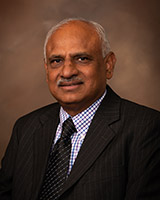
Sivaraman Guruswamy
Professor, Associate Dean for Academics, COSOffice: WBB 425
Phone: 801-581-7217
Email: s.guruswamy@utah.edu
Research Interests
Physical metallurgy, Magnetic and Magnetostrictive Materials, UV and THz Plasmonic Metamaterials, and Materials Processing.

Research Interests
Nature integrates multifunctional materials to control performance and establish hierarchical structure-property relationships. Synthetic polymers, however, often fail to replicate such complexity. My research group aims to leverage material chemistry to enable new capabilities in additive manufacturing, biomedical devices, and electronic devices. Our approach combines materials design, in-situ reaction monitoring, polymer characterizations, and optical design. In particular, we are interested in utilizing light as a stimulus to pattern the heterogeneity of material nano/macro structures, thereby creating multifunctional materials.
Google Scholar
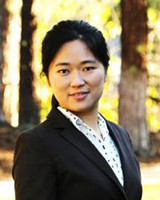
Research Interest
Though crystalline materials are often characterized by periodic order, of particular interest to my research is how correlated disorder and competing local forces give rise to unusual phenomena that are inaccessible to perfect crystals, yet are crucial for energy storage and other applications. We approach these scientific questions by coupling synthesis and property measurements with advanced total scattering and spectroscopic characterizations.
Google scholar

Research Interest
Surface chemistry of minerals, characterization of 3D structures in micro and nano scale, and fluid flow through porous media
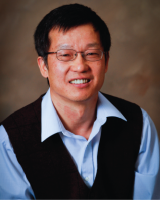
Feng Liu
Distinguished ProfessorIvan B. Cutler Endowed Professor
Office: CME 216
hone: 801-587-7719
Email: fliu@eng.utah.edu
Research Interests
My research interests lie in the materials modeling and simulation from the atomic to mesoscopic scales. We develop and apply both first-principles computational methods and phenomenological theoretical models to study a wide spectrum of materials properties in various materials systems. Most recently, we have focused on modeling and simulation of properties of surfaces and interfaces, growth mechanisms of thin films, and self-assembly and self-organization of nanostructures.
Google Scholar

Swomitra Mohanty
Associate ProfessorOffice: WBB 209
Phone: 801-587-7299
Email: swomitra.mohanty@utah.edu
Research Interests
Titanium-oxide nanotubes for organic compounds (VOCs) detection for disease diagnosis.
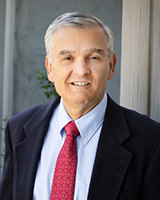
Charles Musgrave
Professor, Dean Price College of EngineeringOffice: 1692 WEB
Email: u6058705@utah.edu
Interests
Dean Musgrave provides leadership to the College in strategic planning, administration, academic programs, faculty career development, and external relationships. He works closely with the department chairs and college staff on development, outreach and public relations.
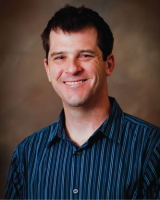
Research Interest
Compound semiconductor research, laser processing of compound semiconductors, and photovoltaics. We have current projects in CdTe, CZTSSe, and III-V’s.
Google Scholar

Research Interests
Nuclear fuel pyroprocessing, Molten salt electrochemistry and spectroscopy.
Google Scholar
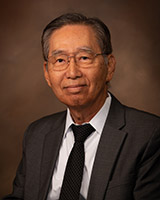
Research Interest
Chemical Synthesis of Inorganic Nanomaterials, Hydrogen Storage Materials Development, Metallurgical Process Engineering, Fluid.

Research Interest
Materials informatics and using machine learning to discover, synthesize, and characterize new energy materials.
Google Scholar
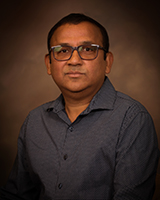
Research Interest
My research is on advanced materials for application in a variety of areas including Nano-Electronics, Spintronics, Spin-Caloritronics, Thermoelectrics and Gas Sensors. We use pulsed laser deposition technique for designing new functional materials and smart structures. Our current emphasis is on Oxide and Chalcogenides based 2D materials.
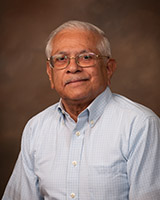
Anil Virkar
Distinguished ProfessorH. Kent Bowen Endowed Professor
Office: CME 316-315
Phone: 801-581-5396
Email: anil.virkar@m.cc.utah.edu
Research Interest
Research interests in fuel cells, batteries, sensors, high temperature materials (ceramics), solid state and liquid state electrochemistry, materials synthesis, energy-related research.
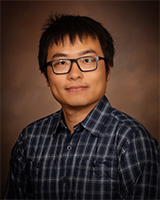
Research Interest
Most polymer materials are not recycled today because they are not designed to be recyclable. Our research group is broadly interested in recyclable-by-design polymer materials that enable a circular economy of plastics, composites, flexible electronics, etc. Our approach integrates molecular design, structure-property relationship, and performance-driven process development. Please check out the group website for more information.

Research Interest
Mineral processing and extractive metallurgy with research interests in rare earth element extraction and purification, integration of biotechnologies in extractive metallurgy, strategic material recycling, coal preparation, and mine waste treatment.
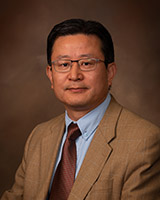
Research Interest
Current research interests include molecular self-assembly, organic semiconductors and nanostructures, nanoscale imaging, molecular probe, fluorescence sensing, optoelectronic sensors and nanodevices, as well as the relevant applications in solar energy conversion, and trace chemical and explosives detection.
Google Scholar
RESEARCH FACULTY
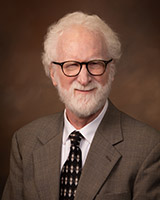
Research Interest
The Effects of Molybdenum Additions on the Sintering and Mechanical Behavior of Ultrafine-Grained Tungsten.

Prashant Sarswat
Research Associate ProfessorOffice: WBB 119
Phone:
Email: prashant.sarswat@utah.edu
Research Interests
Laser-Assisted Manufacturing, Material Design and Development, 2D Layered Materials, Recycling, Materials Chemistry.

Research Interests
Powder Metallurgy; Additive Manufacturing
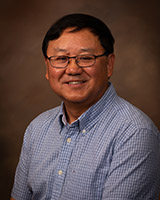
Research Interest
Flotation chemistry, Spectroscopy analysis at surface and interface, Industrial mineral processing, Wastewater treatment, Gypsum dehydration/rehydration processing, Development of Li-ion battery.
Professor Emeritus
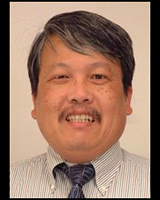
Chen-Luh Lin
Professor Emeritus
chenluh.lin@utah.edu

Jan Miller
Professor Emeritus
jan.miller@utah.edu
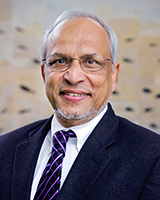
Mano Misra
Professor Emeritus
mano.misra@utah.edu

Dinesh Shetty
Professor Emeritus
d.shetty@utah.edu

